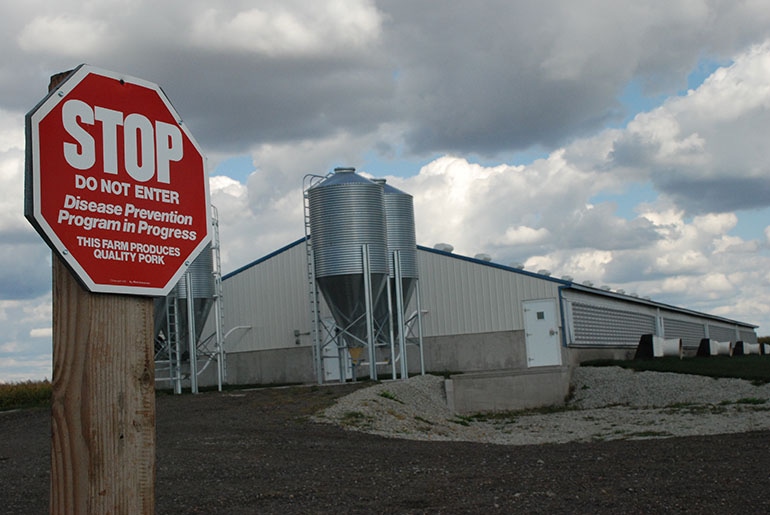SHIC calls for research proposals on swine disease pathogen detection
Preliminary proposals due June 7
May 25, 2016

The Swine Health Information Center is soliciting preliminary research proposals, which are due by June 7, that focus on disease pathogen detection. Specifically, the research will focus on current lab technology, such as polymerase chain reaction, that is commonly available at most major U.S. veterinary diagnostic laboratories.
This research effort will help to minimize the impact of future disease threats to this country. The call centers on the widespread technology that uses antigen detection platforms that have the ability to detect among the prioritized list of the 42 viruses (35 genera) on SHIC’s Swine Disease Matrix of pathogens found at SwineHealth.org.
Since some of the pathogens in the Swine Disease Matrix are not currently in the United States, some research may have to be conducted in collaboration with a foreign laboratory or in another manner to ensure that the pathogen will not be introduced in this country. Likewise, there may be some antigen detection assays already produced and available in other countries, so this research may include an assessment of the fitness for its domestic use.
Swine Disease Matrix provides guide
In collaboration with the American Association of Swine Veterinarians, the National Pork Board and the National Pork Producers Council, the SHIC has prioritized a list of endemic and foreign swine pathogens. Known as the Swine Disease Matrix, the list includes an assessment of the diagnostic capabilities for selected pathogens, based on a review of available literature. In addition, a recent literature search to try to discover the current availability of diagnostic capabilities for selected matrix viruses has been completed and is available to interested researchers.
Proposal specifics
Interested researchers will focus on up to five pathogens for which the research laboratory has the interest and capacity to conduct the research. Each preliminary proposal will include a brief description of the laboratory’s plan for ensuring that the pathogen will not be introduced into the United States if it is not currently endemic. That description could include plans for international collaborations, biosecurity/biocontainment facilities or other methods. The important criteria for selection are the lab’s interest, capacity and biocontainment plan. There currently is no need to try to select “high priority” viruses for the project.
SHIC will review the preliminary proposals and assess the coverage of the pathogens on the matrix and the plans to address introduction. When a laboratory is selected to address a pathogen or a set of pathogens, it will be asked to develop a detailed proposal for each pathogen. The SHIC Preparedness and Response Working Group will oversee the project and make the proposal selections.
Questions may be directed to Paul Sundberg, Swine Health Information Center executive director, 834 26th Street, Perry, IA 50220, 855-211-4333 (office) or 515-451-6652 (cell).
The mission of the Swine Health Information Center is to protect and enhance the health of the United States swine herd through coordinated global disease monitoring, targeted research investments that minimize the impact of future disease threats, and analysis of swine health data. For more information, visit SwineHealth.org or contact Sundberg.
You May Also Like



